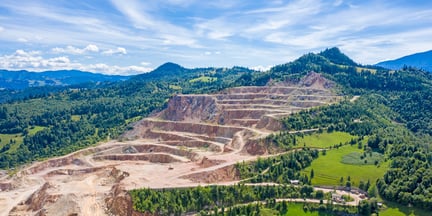
Environmental Impact Studies: Main Considerations for Sustainable Mining Practices
In a context where social and environmental acceptability has become a crucial issue for mining projects, environmental impact studies (EIS) are emerging as an indispensable strategic tool. Far from being an administrative formality, the EIS is at the heart of best practices in environmental risk management and serves as an essential lever to guide mining development toward greater sustainability.
Here are the main considerations to incorporate to ensure the success of this approach.
Upstream Reflection: Laying the Right Foundations from the Start
It is never too early to positively influence the destiny of a mining project. A rigorous preliminary reflection allows for a better project definition, reduces its environmental footprint, and anticipates critical issues. Several elements must be evaluated from the very first stages:
- Access to resources, water, and energy: These three pillars determine the feasibility and sustainability of the project.
- Strategic planning: The placement of infrastructure must minimize impact on sensitive areas.
- Baseline status of the receiving environment: Establishing an accurate and comprehensive picture of the natural environment, while considering its variability, is an essential form of “insurance.”
- Clear project definition: A sufficient level of detail is necessary to support the EIS and meet the expectations of governmental authorities.
Identifying Major Environmental Risks
Mining projects are inherently complex. Their development can give rise to numerous environmental risks, notably related to:
- Location and infrastructure
- Water management
- Solid waste management
- Climate change
- Energy, soils, air, biodiversity, etc.
Among these issues, three key areas deserve special attention: water management, solid waste management, and adaptation to climate change.
Water Management
Rigorous water management is indispensable to prevent negative impacts on aquatic environments:
- Establish a comprehensive water balance.
- Isolate clean water upstream using diversion ditches.
- Provide a temporary water reserve to limit non-compliant discharges.
- Account for hydrological variability to design appropriate systems.
- Choose reliable treatment systems.
- Map sensitive elements of the aquatic environment.
Solid Waste Management
The storage and management of solid waste represent major challenges:
- Analyze the natural geochemical background.
- Evaluate the risks of leaching and acid mine drainage.
- Optimize treatment processes.
- Design tailings storage facilities while taking climate change into account.
- Implement a rigorous monitoring system (movements, humidity, dust, etc.).
Adaptation to Climate Change
Climate change can compromise the sustainability of mining infrastructure:
- Extreme precipitation, forest fires, permafrost thaw, storms, rising sea levels.
- These phenomena influence water management, effluent quality, and spill risks.
- A climate analysis and an adaptation plan are now required by many investors.
A Continuous and Iterative Process
Environmental risk management does not stop at project approval. It must be updated throughout the life cycle of the mining project:
- Risk register (exploration, development)
- Emergency response plans (impact study, redevelopment)
- Environmental and social monitoring plans (construction, operation)
- Environmental and social management systems (closure, restoration)
This iterative approach allows for the adjustment of measures in line with the evolving realities of the project and its environment.
Financing and Compliance with International Standards
Today, complying with local regulatory frameworks is no longer sufficient. International funders require adherence to stricter standards, such as:
- The Equator Principles
- The performance standards of the International Finance Corporation (IFC)
- Climate analysis and adaptation plans
Independent engineers mandated by investors scrutinize risk registers and management plans to ensure the project's environmental and social viability.
The Importance of Stakeholder Engagement
Finally, sustainable mining practices rely on a relationship of trust with local and indigenous communities. This involves:
- Early and continuous consultation
- Active listening to concerns
- Transparent, honest, and respectful communication
- Consistent actions in line with commitments made
Even if not detailed here, stakeholder engagement must be an integral part of any risk analysis.
Environmental impact studies should not be seen as a mere formality, but rather as a strategic opportunity to optimize the mining project, reduce its footprint, and ensure its sustainability. A well-structured approach, initiated at the earliest stages of development and supported by continuous and rigorous risk management, forms the cornerstone of responsible mining practices.
 Author
Author
Vincent Blanchard
Director Environment, Climate Change and Community


Contributors
Valérie Villeneuve
Biologist, team leader and project manager
Vital Boulé
M.Sc., senior environmental expert
Back to blog